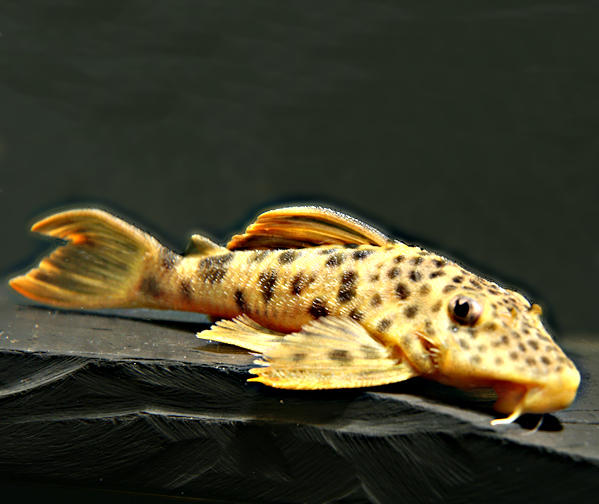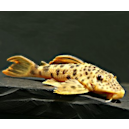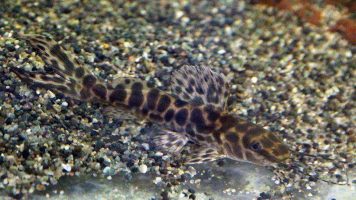Hello catfish freaks,
… today I want to introduce you to some articles from the current issue of Amazonas (May, June 2015). In this we can find a bombshell in the systematics of Loricariidae. Next there is a lot of information about Corydoras
Ingo Seidel "Neue Erkenntnisse zu den Verwandtschaftsverhältnissen der Hypostominae" ("New findings on the family relationships of Hypostominae")
Ingo Seidel reports about the paper "Multilocus molecular phylogeny of the suckermouth armored catfishes (Siluriformes: Loricariidae) with a focus on subfamily Hypostominae" from Nathan K. Lujan, Jonathan W. Armbruster, Nathan R. Lovejoyd, Hernán López-Fernández. After the first information that the Rhinelepini are separated from Hypostominae we must expect a comprehensive restructuring of Loricariidae will follow.
Further Ingo wrote for example: “The most surprising finding is that the two generic groups (tribes) Ancistrini and Hypostomini not represent two sister groups as previously assumed based on morphological characteristics, but now the Hypostomini are classified in the family tree of Ancistrini.”
It’s only 10 years ago that one group the subfamily Ancistrinae as tribe Ancistrini in the subfamily Hypostominae.
But that is certainly not the only surprise. For example, in the Hemiancistrus-clade we find now the species of Baryancistrus, Hemiancistrus, Panaque, Parancistrus and Spectracanthicus. On the other side "Baryancistrus" beggini, "Baryancistrus" demantoides, "Hemiancistrus" subviridis don´t fit in molecular phyletic view in this clade.
Another example, the Peckoltia-clade. In this there are Etsapu, Peckoltia, Panaqolus, Scobinancistrus, Hypancistrus, Micracanthicus und Peckoltichthys (alias Sophiancistrus, for surprise also Isorineloricaria und Aphanotorulus.
In this paper "Peckoltia" feldbergae is ordered between Hemiancistrus and Peckoltia. Therefore, we think that the genus Ancistomus is valid. On the other side, we find "Peckoltia" sabaji which has many visible characteristics of Ancistomus as Peckoltia?
There are still many restructuring, nor a surprise or two, but that you can read in the Amazon itself.
Hans-Georg Evers "L67 beschrieben"("L67 described")
Hans informs about the description of L67 as Pseudancistrus asurini from Silva et. al. ("Two new species of Pseudancistrus (Siluriformes, Loricariidae) from the Amazon basin, northern Brazil"). On the edge he mentions about the first description of Pseudancistrus kayabi.
Hans-Georg Evers "Schöne Panzerwelse – Einblicke in die natürlichen Lebensräume" ("Beautiful Corydoras – insights into the natural habitats")
If you asked Hans for tips for reproduction of any fish, he recommended mostly, learn more about the home habitat of the animal. In this sense Hans say, that the Corydoras keepers must do this homeworks. Hans provides us several habitats of Corydoras sterbai, Corydoras haraldschultzi from Rio Guaporé, Corydoras gossei and Corydoras seussi from Rio Marmoré, Corydoras araguaiaensis from Rio Araguaia, Scleromystax barbatus from state Rio de Janeiro and so on.
Brian Perkins "Wiederentdeckung eines Phantoms – wie Corydoras weitzmani 30 Jahre nach seiner Beschreibung seinen Weg in die Aquaristik gefunden hat – eine Übersicht" ("Rediscovery of a phantom – like Corydoras weitzmani has found 30 years after its description its way into the aquarium – an overview")
In 1971 Nijssen described Corydoras weitzmani with reference to preserved material. In first assumptions they should live in the Río Vilcanota-System near Cusco. In old maps there one found the name Cordillera Vilcanota. The consideration that armored catfish probably need warm water, you came to the outflows from the Cordillera Vilcanota towards the Amazon basin. Finally, you could find Corydoras weitzmani there.
Today the habitats of Corydoras weitzmani are threatened by illegal gold seekers.
Corydoras weitzmani and Corydoras sp. “CW16” live sympathetic. Corydoras weitzmani can multiply very well. But the reproduction of Corydoras sp. „CW 16“ is very dificult.
Steve Grant "Der Stromlinienpanzerwels Corydoras arcuatus – jahrzehntelang falsch bestimmt"
("Corydoras arcuatus – decades wrongly determined")
Steve Grant found a picture of Mark Allen, which is showing the holotype of Corydoras arcuatas.
In the first description there is a picture from a round-headed Corydoras without exactly specifying the fishing village. For example one assigned Corydoras sp. “C20” to this species. The above-mentioned picture shows a pointy-headed Corydoras, which more corresponds to Corydoras sp. “CW36”. Steve suggested that in the first description we can see a picture of a paratype and so this Corydoras have been determined incorrectly for years. It is time to learn anew.
Wolfang Kochsiek "Corydoras duplicareus Sands, 1995 – der breitere Strich macht den Unterschied"
("Corydoras duplicareus Sands, 1995 – the broader line makes the difference")
Corydoras duplicareus got its name due to the very close similarity with Corydoras adolfoi. Both types are distinguished by the back line. This line is in Corydoras duplicareus significantly wider. The pedant with a pointed snout is Corydoras serratus. As Wolfgang writes, males and females can be distinguished based on the shapes of the pelvic fins. The pelvic fin of males is more pointed.
Next, the author reports the usual care and breeding conditions. Grindal, Tubifex, mosquito larvae (black, red) have a positive affect for spawn. As is common with other Corydoras species, water changes with cooler, soft water introduce to the destination. For rearing Wolfgang Kochsiek use Artemia.
… all around a very good catfish edition, many thanks.
Enjoy reading the Amazonas


